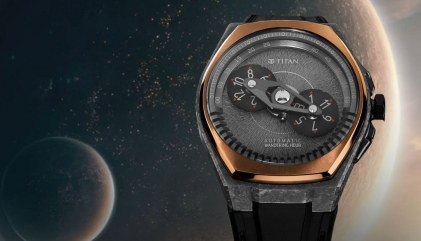In 2012, Canadian filmmaker and explorer James Cameron — known for directing movies such as Titanic and Avatar — went 10,908m under the sea and created history. On this notable trip, he was accompanied by an experimental watch, provided by Rolex, which broke all the records and became the timepiece to go deepest in water. Now, taking inspiration from this experimental watch, Rolex has released a brand-new model, the Oyster Perpetual Deepsea Challenge, that offers water resistance of up to a mind-boggling 11,000m. Apart from this, the latest watch is also the brand’s first-ever all-titanium model.

In order to craft the new Rolex Oyster Perpetual Deepsea Challenge, the watchmaker had to change the construction of its case. After years of research and development, it came up with the innovative Ringlock system — a patented case architecture that enables the watch to withstand extreme pressure; the helium escape valve, which allows surplus gas to escape from the watch during a diver’s decompression phase in a hyperbaric chamber, reducing the pressure inside the case which could otherwise damage the watch; the Triplock crown, with three sealed zones and an ultra-thick caseback.

As mentioned before, the new Rolex watch is an all-titanium model, made from what the brand calls RLX titanium. The material is ultralight in weight and offers significant robustness and durability to the timepiece.

Meanwhile, the dial of the new Rolex Oyster Perpetual Deepsea Challenge comes with a three-hand timekeeping system along with hour markers and remains clean and perfectly legible. It is powered by the Calibre 3230, a movement entirely developed and manufactured by Rolex. Beating at a frequency of 28,800vph, the COSC-certified calibre provides a power reserve of a decent 70 hours.

The new Rolex watch is paired with a three-link Oyster bracelet in RLX titanium, with fully brushed surfaces. It is closed by an Oysterlock safety clasp with a Rolex Glidelock extension system and a Fliplock extension link.
Image Courtesy: Rolex
















